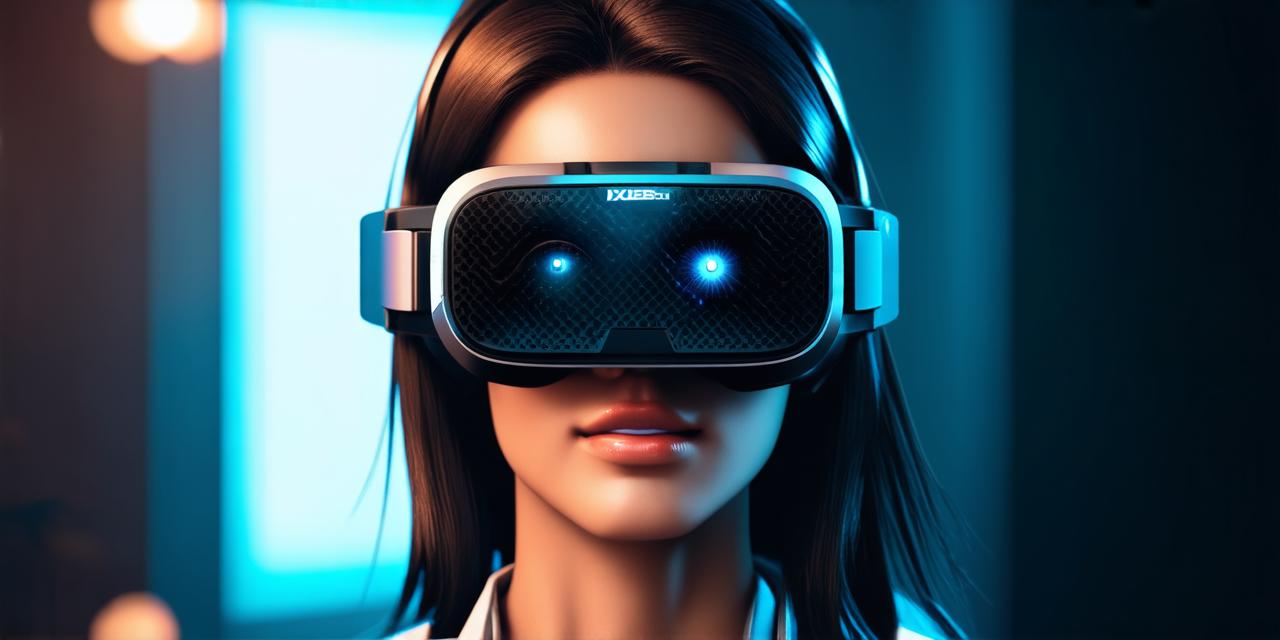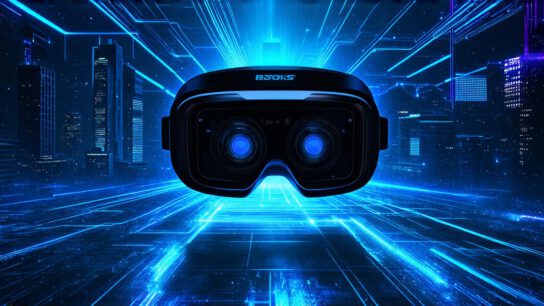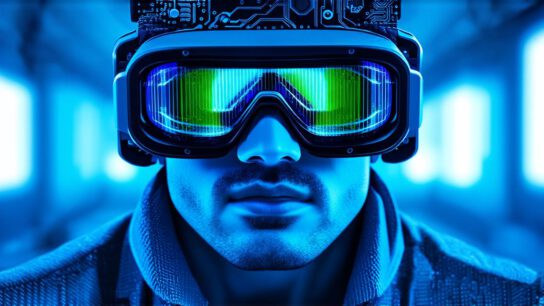<!DOCTYPE html>
Virtual Reality Technology
VR technology involves a head-mounted display (HMD) that projects images directly into the user’s field of view. This creates a virtual environment that appears to be three-dimensional, allowing users to feel as though they are immersed in a new world. VR headsets have become increasingly popular in recent years and have found applications in gaming, education, and healthcare.
Potential Risks of Virtual Reality Headsets on Eye Health
One potential risk of using VR headsets is eye strain and discomfort. When users spend extended periods wearing the headset, it can cause dryness, itching, and irritation of the eyes. This is because the HMD blocks out natural light, reducing the amount of oxygen that reaches the cornea of the eye, which can lead to dryness and discomfort.
Another potential risk of VR headsets on eye health is motion sickness. Motion sickness occurs when there is a mismatch between what the brain perceives and what it receives from the eyes. This can cause nausea, dizziness, and headaches, especially in users who are sensitive to motion.
Benefits of Virtual Reality Headsets on Eye Health
Despite the potential risks, there are also benefits to using VR headsets that can improve eye health. One such benefit is improved focus and concentration. When users wear the headset, they are fully immersed in the virtual environment, which can help them to concentrate better and reduce distractions. This can be particularly beneficial for people who work in high-stress environments or have difficulty staying focused.
Another potential benefit of VR headsets is improved visual acuity. Studies have shown that using VR headsets can improve visual acuity, especially in people with age-related macular degeneration (AMD), a common eye condition that affects the ability to see clearly. This is because VR technology allows users to focus on objects at different distances and angles, which can help to strengthen their visual abilities.
Case Studies of Virtual Reality Headsets and Eye Health
One case study that highlights the potential benefits of VR headsets on eye health is a study conducted by the University of California, Irvine (UCI). The study found that using VR headsets for just 20 minutes a day can improve visual acuity and reduce symptoms of AMD. The researchers believe that the immersive nature of VR technology allows users to focus on objects at different distances and angles, which can help to strengthen their visual abilities.
Expert Opinions on Virtual Reality Headsets and Eye Health
Many experts believe that while there are potential risks associated with using VR headsets, these risks can be mitigated with proper use. Dr. David Eagleman, a neuroscientist and the author of the book “Incognito: The Secret Lives of the Brain,” recommends using VR headsets for short periods and taking breaks to rest your eyes.
Dr. Jill Bates, an optometrist and professor at the University of Waterloo in Canada, also recommends using VR headsets in moderation and taking steps to protect your eyes while wearing them, such as keeping the lenses clean and adjusting the settings to reduce eye strain.
Real-Life Examples of Virtual Reality Headsets and Eye Health
One real-life example of how VR technology can improve eye health is the use of VR in stroke rehabilitation. Stroke patients who use VR headsets to practice movements in a virtual environment have shown significant improvements in their balance and coordination compared to those who do not use VR technology. This can help them to regain their mobility and reduce the risk of falls.
Another real-life example is the use of VR in education. Students who use VR headsets to learn about historical events or scientific concepts have shown better retention and understanding of the material compared to those who do not use VR technology. This is because VR technology allows students to immerse themselves in the learning experience, which can help them to engage more deeply with the material.
Conclusion
In conclusion, while there are potential risks associated with using VR headsets on eye health, these risks can be mitigated with proper use and caution. The benefits of VR technology, such as improved focus, concentration, and visual acuity, make it a valuable tool for improving eye health and well-being. As technology continues to advance, we can expect to see even more applications for VR headsets in healthcare and education.
FAQs
Here are the answers to some frequently asked questions about using VR headsets:
- How long should I wear my VR headset each day? It is recommended to wear your VR headset for short periods of time, typically 20-30 minutes at a time, and take breaks to rest your eyes.
- Can motion sickness be prevented when using VR headsets? Motion sickness can be prevented by adjusting the settings on the VR headset to reduce the amount of movement in the virtual environment, as well as taking steps to prevent discomfort, such as keeping the lenses clean and maintaining good posture.



